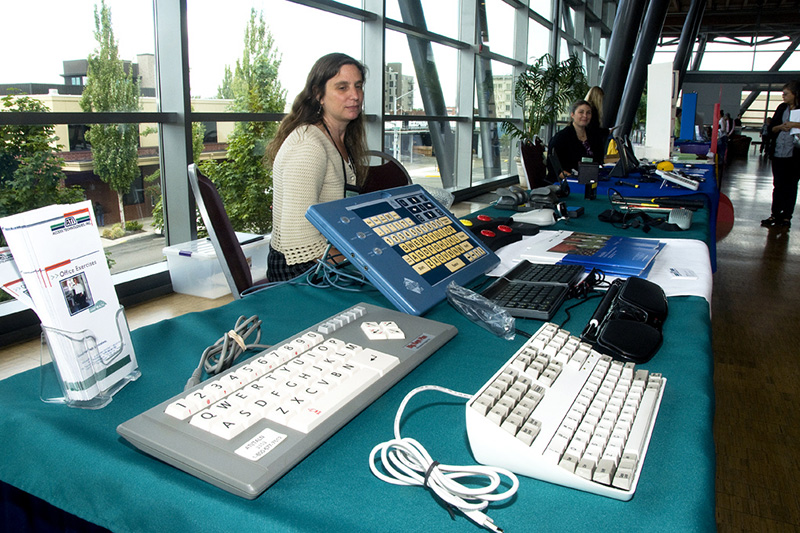
Examples of assistive technologies and devices available. Original photo provided by the Oregon Dept. of Transportation.
In 2009 public school teachers across the country were surveyed on how they used technology to help students learn. 97% of teachers reported that they had one or more computers in the classroom and that the classrooms were wired for Internet access. Students were using the computers and other technology to write reports, take tests, and research topics.
Yet despite the growing availability of technology for learning, many students with disabilities have not been able to have reliable access to or benefit from this classroom technology. These students may require an individualized evaluation that looks at the need for assistive technology devices or services.
What is Assistive Technology?
The Individuals with Disabilities Education Act (IDEA) defines assistive technology (A.T.) as any item, piece of equipment or device that is used to increase, maintain, or improve the functional capabilities of a student with a disability.
Assistive technology services are defined as any service that helps the student select, acquire or use an assistive technology device. These services may include training in the use of the device for the student, his family and his teachers.
What Does IDEA Require?
IDEA requires schools to make available assistive technology devices or services, or both, to a student with a disability IF required as a part of the student’s special education, related services, or supplementary aids and services. A.T. is considered a supplementary aid, if it allows the student to remain in the general education classroom.
The determination of whether or not a student requires A.T. is made by the IEP team once present levels of performance are determined and appropriate supports and services are discussed. The team also decides if any assistive technology device purchased by the school can also be used at home. This may include providing an A.T. device or software needed to complete homework or to address a skill required at school, at home and in the community–like communication.




